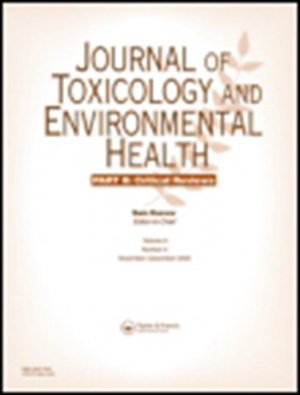Paraquat and Parkinson’s disease: a systematic review and meta-analysis of observational studies
IF 6.4
2区 医学
Q1 ENVIRONMENTAL SCIENCES
Journal of Toxicology and Environmental Health-Part B-Critical Reviews
Pub Date : 2019-08-18
DOI:10.1080/10937404.2019.1659197
引用次数: 39
Abstract
ABSTRACT This investigation aimed to conduct a systematic review of the literature and meta-analysis to determine whether exposure to the herbicide paraquat was associated with the development of Parkinson’s disease (PD). Observational studies that enrolled adults exposed to paraquat with PD as the outcome of interest were searched in the PubMed, Embase, LILACS, TOXNET, and Web of Science databases up to May 2019. Two authors independently selected relevant studies, extracted data, and assessed methodological quality. The evidence certainty was assessed by the GRADE approach, which served as basis for a tentative causality assessment, supplemented by the Bradford Hill criteria when necessary. Results from nine case–control studies indicated that PD occurrence was 25% higher in participants exposed to paraquat. The only cohort investigation included demonstrated a non-significant OR of 1.08. Results from subgroup analyses also indicated higher PD frequency in participants that were exposed to paraquat for longer periods or individuals co-exposed with paraquat and any other dithiocarbamate. Data indicate apositive association between exposure to paraquat and PD occurrence, but the weight-of-evidence does not enable one to assume an indisputable cause–effect relationship between these two conditions. Better designed studies are needed to increase confidence in results. Systematic Review Registration: PROSPERO CRD42017069994.百草枯与帕金森病:观察性研究的系统回顾和荟萃分析
本研究旨在对文献进行系统回顾和荟萃分析,以确定暴露于除草剂百草枯是否与帕金森病(PD)的发展有关。在PubMed、Embase、LILACS、TOXNET和Web of Science数据库中检索了截至2019年5月的观察性研究,这些研究纳入了暴露于百草枯并患有PD的成年人。两位作者独立选择相关研究,提取数据,并评估方法学质量。证据确定性通过GRADE方法进行评估,该方法作为初步因果关系评估的基础,必要时辅以Bradford Hill标准。9个病例对照研究的结果表明,暴露于百草枯的参与者患帕金森病的几率高出25%。唯一纳入的队列调查显示OR为1.08,无显著性差异。亚组分析的结果还表明,暴露于百草枯时间较长的参与者或同时暴露于百草枯和任何其他二硫代氨基甲酸酯的个体的PD频率较高。数据表明,暴露于百草枯与PD的发生呈正相关,但证据的权重并不能使人们假设这两种情况之间存在无可争议的因果关系。需要设计更好的研究来增加对结果的信心。系统评价注册号:PROSPERO CRD42017069994。
本文章由计算机程序翻译,如有差异,请以英文原文为准。
求助全文
约1分钟内获得全文
求助全文
来源期刊
CiteScore
13.80
自引率
6.90%
发文量
13
审稿时长
>24 weeks
期刊介绍:
"Journal of Toxicology and Environmental Health: Part B - Critical Reviews" is an academic journal published by Taylor & Francis, focusing on the critical examination of research in the areas of environmental exposure and population health. With an ISSN identifier of 1093-7404, this journal has established itself as a significant source of scholarly content in the field of toxicology and environmental health.
Since its inception, the journal has published over 424 articles that have garnered 35,097 citations, reflecting its impact and relevance in the scientific community. Known for its comprehensive reviews, the journal also goes by the names "Critical Reviews" and "Journal of Toxicology & Environmental Health, Part B, Critical Reviews."
The journal's mission is to provide a platform for in-depth analysis and critical discussion of the latest findings in toxicology, environmental health, and related disciplines. By doing so, it contributes to the advancement of knowledge and understanding of the complex interactions between environmental factors and human health, aiding in the development of strategies to protect and improve public health.

 求助内容:
求助内容: 应助结果提醒方式:
应助结果提醒方式:


